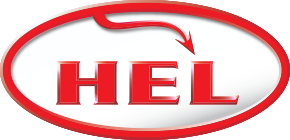Brake Hydraulics
The most powerful part of your motorcycle is not the engine - it's the brakes. That's a fact. Consider this - A GSXR1000 can do a standing quarter mile in 10.8 seconds with a terminal speed of 138mph. Yet the brakes can do the same amount of work, but in reverse, in just 6.8 seconds…
The name hydraulics comes from the Greek word 'hydro' meaning water and 'aulos' meaning pipe. The basics of any hydraulic braking system are as follows. For a hydraulic system to function it must be closed and completely full of fluid and leak free – No fluid can be allowed to leave and no air can be allowed to enter.
In a closed, sealed hydraulic system as outlined above the following laws are true:
- Fluid cannot be compressed to a lesser volume, no matter how high the pressure.
- Pressure is equal over all surfaces of the containing system.
The things that concern us most with brake hydraulics are the following:
Pressure
Is a constant in the hydraulic system. If you put 10 psi into a system hydraulic laws state that this 10 psi will act on all surfaces within the system equally. Pressure In = Pressure Out.
Force
A 1 sq inch master cylinder with 10 lb of force applied to it will produce 10 lb of force per square inch or 10 psi. If the calipers have a surface area of 10 square inches then the force here will be 10 x 10 lb which will mean the calipers produce 100 lb of force. The pressure acting on the system is the same, in this case 10 psi, but the force can be altered by changing the surface area of the calipers.
Fluid Displacement
If our 1 sq inch master cylinder travels forward 1" then the amount of fluid it displaces will be 1 cubic inch. If this fluid is then spread over the 10 square inches of caliper the calipers will only be able to move 1/10th of an inch. You will have huge force (100 lb) but the caliper pistons may not move forward enough to grip the disc tightly and so give a weaker brake. This can be seen to happen on some motorcycles which have a small master cylinder piston and two pot calipers. If the two pots are exchanged for six pot calipers then the surface area increases and the force increases at the caliper BUT the small master cylinder only moves a small amount of fluid which in turn equates to a smaller movement of the caliper pistons
Lever Pivot Point
Any effort you apply with your hand should push the pads against the disc. But your hand isn't that strong. To make the point grab hold of something and squeeze it really hard - do you think that's enough pressure to stop 270kgs of bike and rider from 180mph? Initially the brake lever itself gives you an advantage by multiplying the force at your hand through the lever. For instance, the distance from the lever pivot point to the middle of the lever (where your fingers are) might be 130mm. And yet the distance from the pivot point to the point where the lever acts on the master cylinder might only be 20mm. So, roughly speaking any force applied to the lever will be 6.5 times greater at the master cylinder (130mm/20mm = 6.5)
